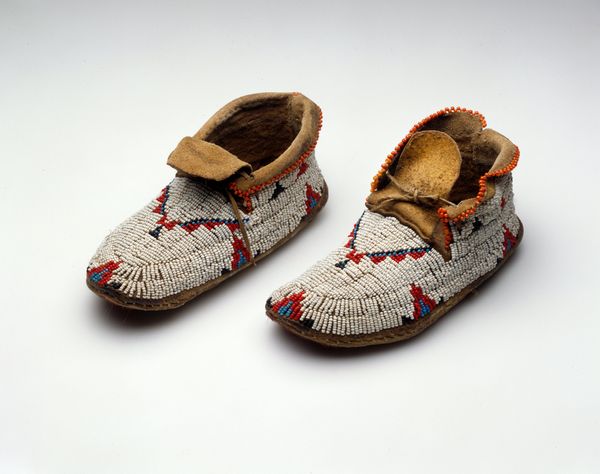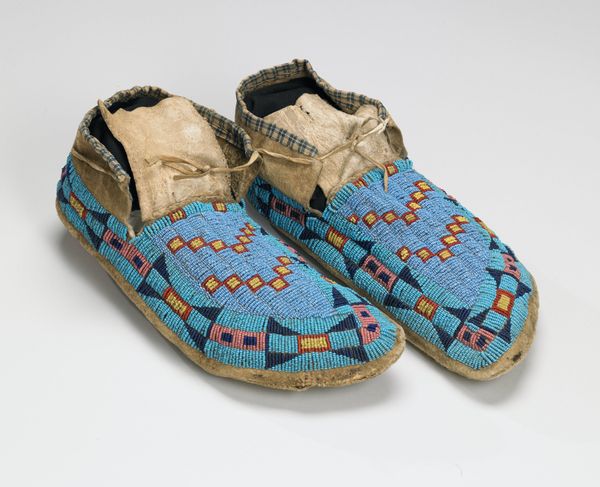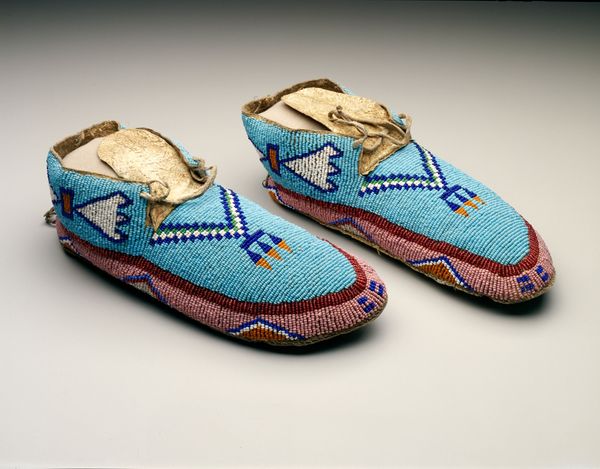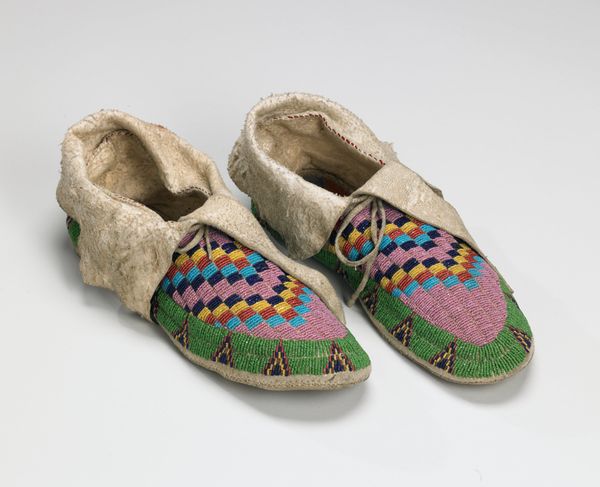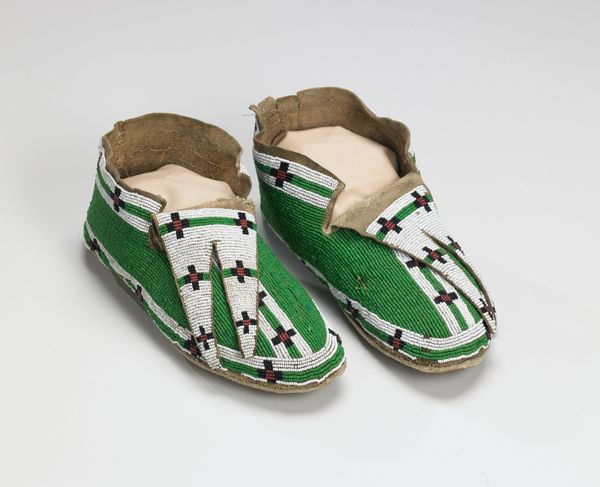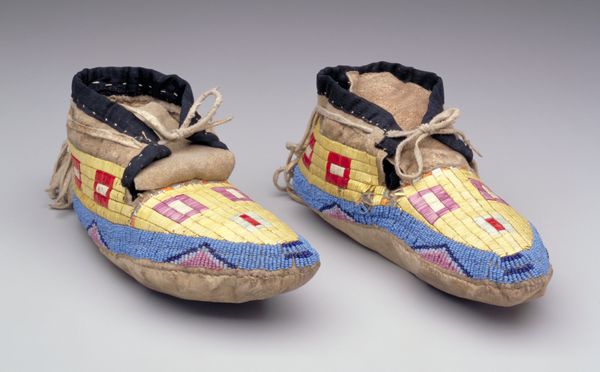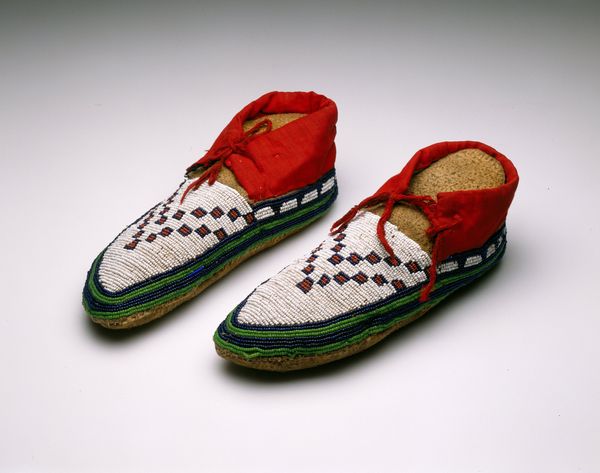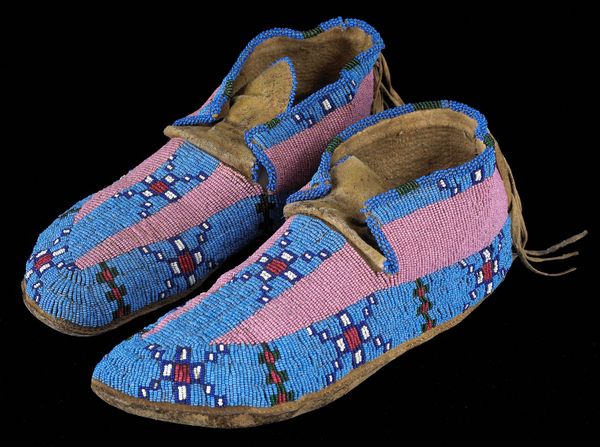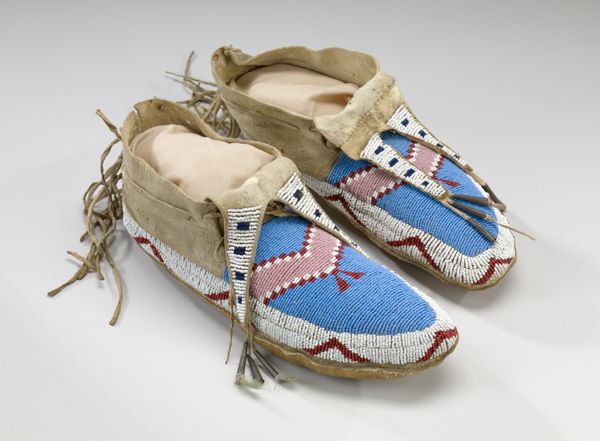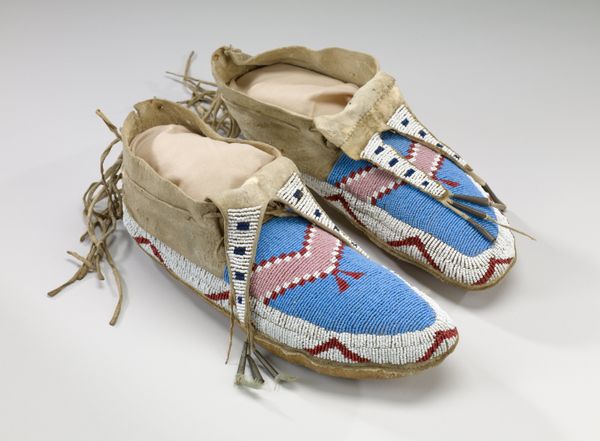
fibre-art, textile
#
fibre-art
#
textile
#
clothing photography
#
geometric
#
decorative-art
#
indigenous-americas
Dimensions: 10 x 4 3/4 x 3 in. (25.4 x 12.07 x 7.62 cm) (a, left)10 x 4 3/4 x 2 3/4 in. (25.4 x 12.07 x 6.99 cm) (b, right)
Copyright: Public Domain
Editor: These are a pair of moccasins, created around 1890, by an artist or group of artists from the Nêhiyawak (Cree) nation. The detailed beadwork looks so delicate, and I’m curious about the story these shoes might tell. What stands out to you about this work? Curator: Well, let's consider their historical context. The late 19th century was a period of immense pressure and cultural disruption for Indigenous communities in North America due to colonization. Artifacts like these moccasins, now housed in museums, become powerful, though often silent, witnesses to this history. Editor: How so? I mean, they’re beautiful, but what political weight do they carry? Curator: The presence of these moccasins in a collection like the Minneapolis Institute of Art is significant. Were they made for trade, personal use, or ceremonial purposes? The geometric patterns – do they have specific cultural meanings now lost to us or actively maintained within the community? Furthermore, we must question how objects from marginalized communities came into museum collections during periods of colonial expansion. It’s a story of power dynamics. Editor: So, displaying them today requires a critical look at how they got here, and what their presence in the museum means for contemporary Indigenous communities? Curator: Precisely. Do current displays serve to educate and foster understanding, or do they perpetuate historical imbalances? Does the museum collaborate with Indigenous communities to ensure respectful interpretation and access? Thinking about these objects necessitates asking these complex questions. Editor: I never thought of it that way, viewing these objects as pieces of a much larger and more complex narrative of cultural interaction and power. Curator: That’s the crucial element, isn’t it? Understanding art’s role within society.
Comments
No comments
Be the first to comment and join the conversation on the ultimate creative platform.

